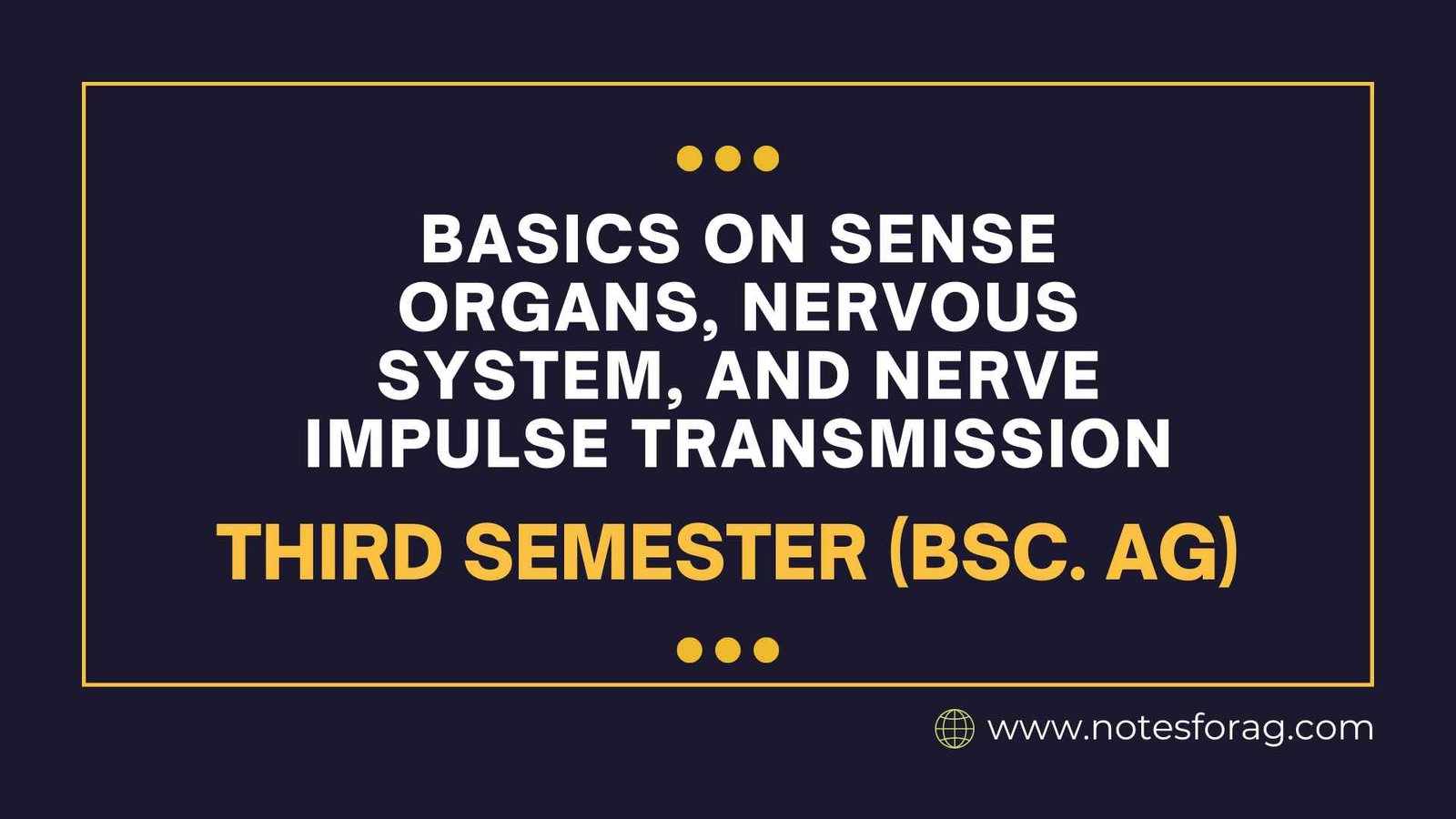Sense organs such as the eyes, ears, nose, tongue, and skin detect and transmit external stimuli (light, sound, chemicals, and touch) to the neurological system. The nervous system is divided into two parts: the central nervous system (CNS), which houses the brain and spinal cord, and the peripheral nervous system (PNS), which connects the CNS to the rest of the body. Nerve impulse transmission involves electrical signals known as action potentials that move along neurons. These signals are created by the flow of ions across the neuron’s membrane and transmitted between neurons via chemical neurotransmitters at synapses, allowing for quick communication throughout the body.
Table of Contents
Introduction to Sense Organs
The human body has five basic sense organs: the eyes, ears, nose, tongue, and skin, all of which play important roles in experiencing the external environment. These sense organs are meticulously engineered to respond to certain stimuli, allowing people to interact with their surroundings successfully. Sense organs are specialized organs that sense environmental changes and send that information to the neurological system. The five primary sensory organs are:
- Eyes (vision): Detect light and enable vision. The retina contains photoreceptors (rods and cones) that detect light.
- Ears (hearing, balance): Detect sound waves and detect balance. Hair cells in the cochlea and vestibular systems convert sound and balance information into nerve signals.
- Nose (smell): Identifies airborne compounds (odors). Olfactory receptors in the nasal cavity attach to odor molecules and transmit signals to the brain.
- Tongue (Taste): Detects molecules in food (tastes). Taste buds contain gustatory receptors that detect flavors (sweet, salty, sour, bitter, and umami).
Nervous System
The nervous system is a complex network that regulates biological activities, processes sensory information, and facilitates communication throughout the body. The nervous system is divided into two major components.

- Central Nervous System: It consists of the brain and the spinal cord. The CNS processes and integrates information.
- Peripheral Nervous System (PNS): Includes all nerves that are not part of the central nervous system. It facilitates communication between the CNS and the rest of the body. The PNS further divides into:
- Somatic Nerve System: Controls voluntary motions and conveys sensory information.
- Autonomic Nervous System: The sympathetic (fight or flight) and parasympathetic (rest and digest) systems control involuntary functions such as the heartbeat and digestion.
Nerve Impulse Transmission
Nerve impulses are the nervous system’s major communication mechanism, allowing information to be transmitted throughout the body. These impulses are created by neurons, which are specialized cells that transmit electrical signals. Nerve impulse transmission is the movement of electrical signals (action potentials) via neurons. The process consists of the following steps:
- Resting Potential: A neuron at rest has a slightly negative charge within relative to the outside due to ion distribution (mainly sodium and potassium ions).
- Stimulus and depolarization: A strong stimulus opens sodium channels, allowing sodium ions (Na⁺) to enter the cell and depolarize it.
- Action Potential: When the depolarization reaches a particular threshold, an action potential is generated. The action potential travels along the axon of the neuron.
- Repolarization: After the action potential, potassium channels open, releasing potassium ions (K⁺) and restoring the negative charge inside the neuron (repolarization).
This process enables the nervous system to rapidly communicate information from the sensory organs to the brain while also sending commands to muscles and organs.
The Interconnection of Sense Organs and the Nervous System
The sense organs function as crucial interfaces between the environment and the neurological system, determining how organisms receive and respond to stimuli. Each sense organ is designed to detect specific stimuli—light, sound, temperature, pressure, and chemical changes—and convert them into nerve impulses. This conversion process begins with sensory receptors, which respond to relevant inputs. For example, photoreceptors in the eyes react to light, but mechanoreceptors in the skin perceive tactile information.
Sensory receptors transform perceptions into biochemical signals, which are then sent through sensory neurons to the central nervous system (CNS). This pathway is critical for sensory information processing because it allows the CNS, specifically the brain, to interpret incoming nerve impulses. The brain integrates information from several sense organs, contributing to our overall view of the environment. For example, when eating food, our senses of smell and touch all add to the flavor experience. This occurrence highlights the complexity of sensory integration and perception.
Frequently Asked Questions
What is the role of the nervous system?
The nervous system controls and organizes all bodily functions, such as sensory perception, movement, and organ function. It interprets information from the sense organs and provides signals to muscles and organs to respond appropriately.
What are the five main sense organs in the human body?
The five primary sensory organs are:
Eyes (for vision),
Ears (to hear and balance)
Nose (to smell)
Tongue (to taste)
Skin (touch, temperature, discomfort)
Related Articles

